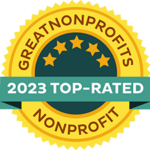Renewal Projects
Disasters not only impact the physical structures of a community but also disrupt daily living by impacting important cultural practices. By living amongst the communities we serve and becoming a part of them, we’re able to identify new ways to help support communities in their recovery.
Disaster Risk Reduction is progressed by teams creating safe learning facilities for students, assisting school committees with their planning and preparation for actions pre, post and during a disaster and ensuring clear operating procedures are established. Additionally, we have offered Risk Reduction and Resilience Education that helps to develop a culture of safety within schools and communities by building key messages into a curriculum and developing standards of teaching.
Water, Sanitation and Hygiene (WaSH) initiatives aim to improve the health of children and community members by reducing the incidence of water and sanitation-related illnesses. WaSH initiatives are separated into two categories: 1) WaSH facilities and 2) Water Filtration
- WaSH Facilities: Our program teams work to identify ways to improve both the physical environment and cleanliness of schools by adding facilities like hand-washing stations and toilets, as well as teaching life skills and providing education on the importance of hygiene behaviors. WaSH facilities are vitally important in helping to improve the health of the communities we serve.
- Drinking-Water / Water-Filtration: When undertaking drinking-water/ water-filtration initiatives, our team engages specialist support and collaborates with local partners, in order to effectively provide safe drinking water to communities. Collaboration on these initiatives allow us to leverage the expertise of those already working to provide clean drinking water and ensure we implement measures that will positively impact the communities we work in.
EdTech, or Educational Technology, is technological tools and media that assist in the communication of knowledge and its development and exchange. This may include hardware, such as computers, tablets, e-readers, etc. or software, audiovisual equipment, and internet connectivity when used in a classroom setting. When implementing EdTech into a school, our program team works alongside the school to determine what level of technology is appropriate and beneficial to them, in order to support students in accessing improved learning opportunities. Additionally, the implementation of EdTech requires teacher training, to ensure they’re prepared and adequately equipped to use these resources in enhancing the learning experience of their students. For more information, download the All Hands and Hearts’ EdTech field guide, which outlines best practice guidelines for the inclusion of EdTech in school reconstruction projects.
Community-Led Projects help with alleviating the damage caused to parks and community spaces. Community Renovation means we’re also thinking about the psychological effect of losing a leisure area in the community. In this scope we plant trees, assist with community spaces clean up, rebuild playgrounds and give walls, bridges and benches a fresh coat of paint.
Health and Safety
All Hands and Hearts make the safety of the people we work for, and that work with us, a priority. We employ a risk-based approach to health and safety, which studies the possible dangers of a workplace and seeks to minimize those dangers through controls, such as usage guidelines, training, supervision and the enforcement of appropriate protective equipment. Each of our worksites have specific operational standards and risk controls to reduce the likelihood of a hazard occurring and contingency plans to reduce the severity of a hazard if it does occur.
It’s volunteers like you who shine a bright light on communities affected by natural disaster.












